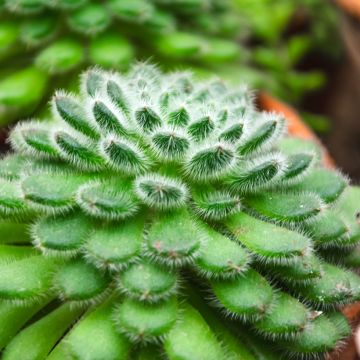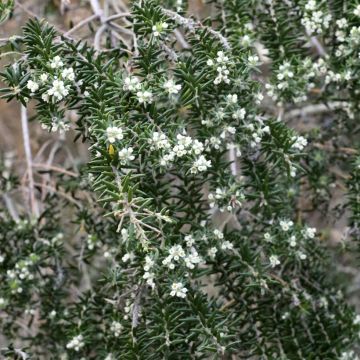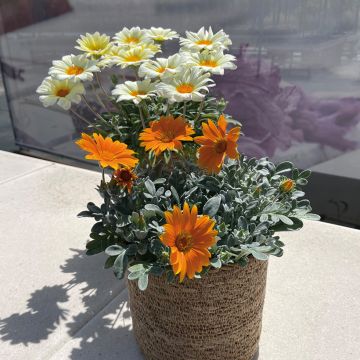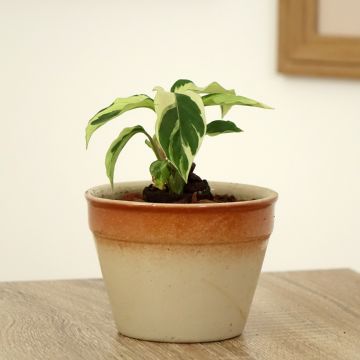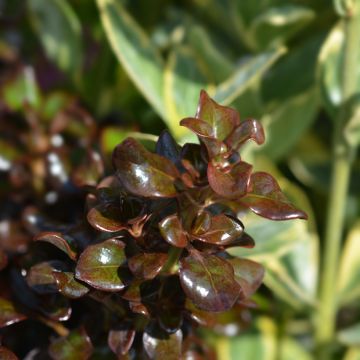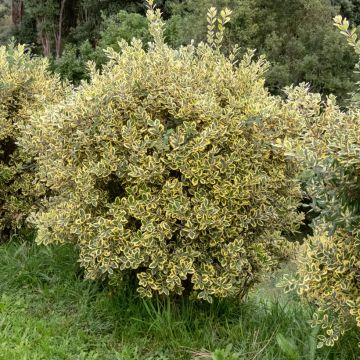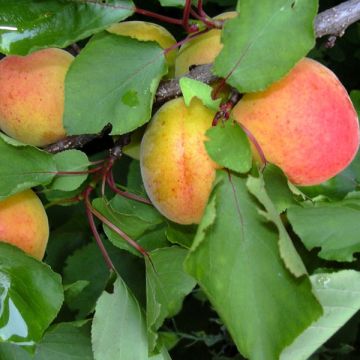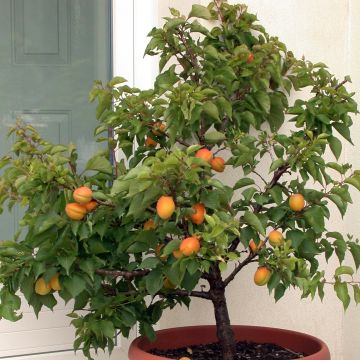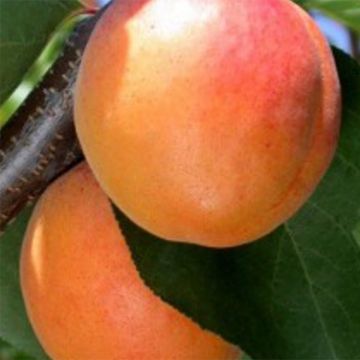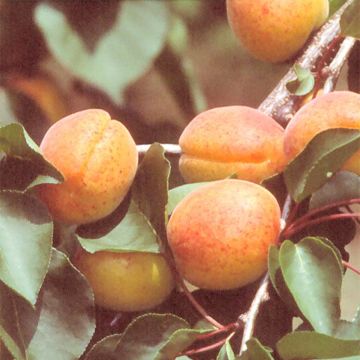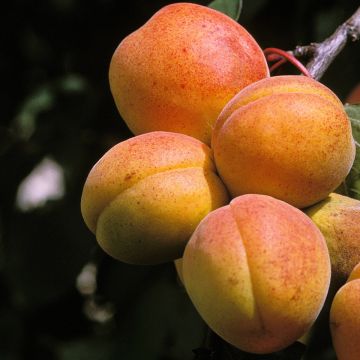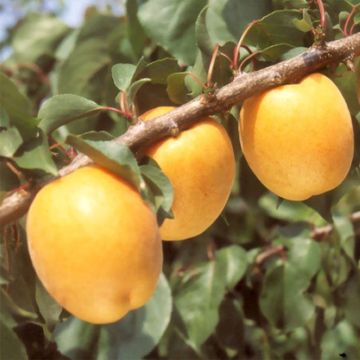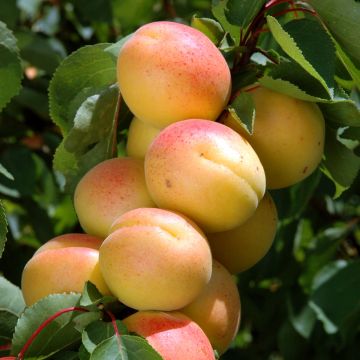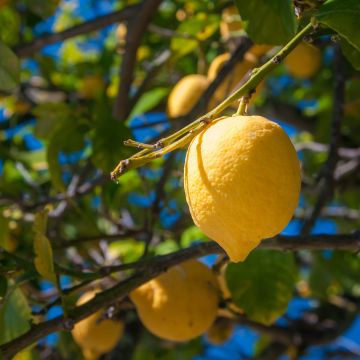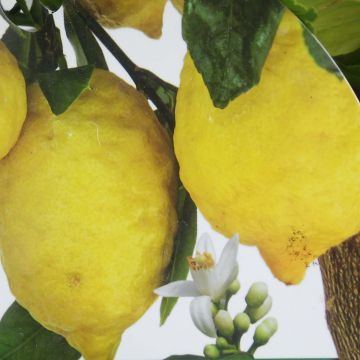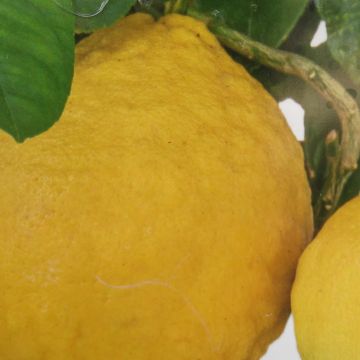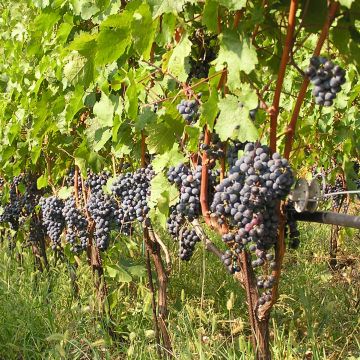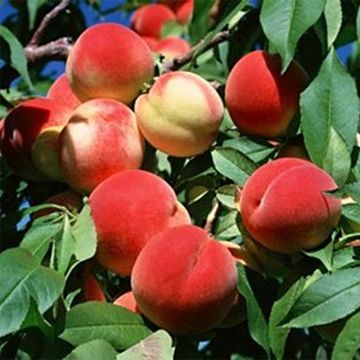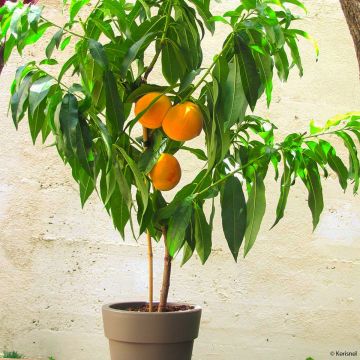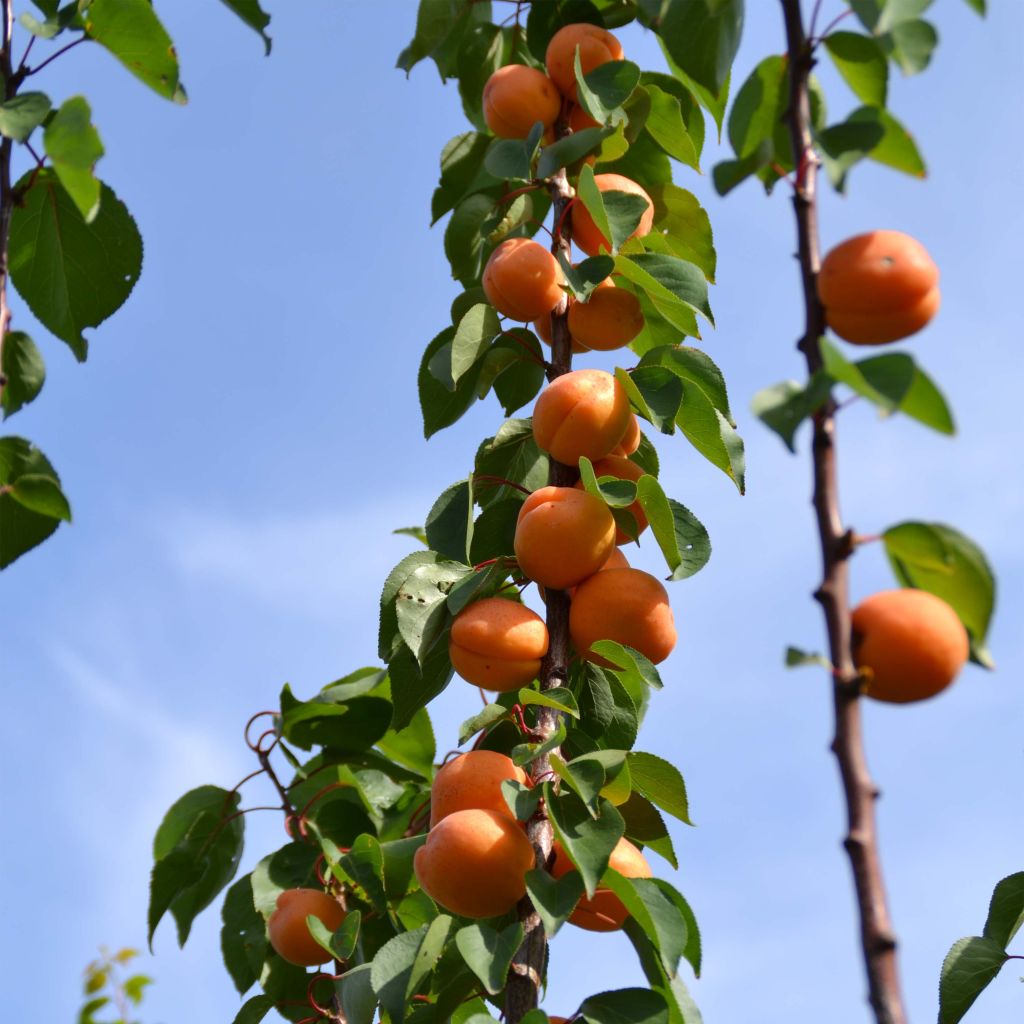

Prunus armeniaca Rustique Des Pyrénées - Apricot Tree
Prunus armeniaca Rustique Des Pyrénées - Apricot Tree
Prunus armeniaca Rustique Des Pyrénées® bourquin
Apricot
Why not try an alternative variety in stock?
View all →This plant carries a 6 months recovery warranty
More information
We guarantee the quality of our plants for a full growing cycle, and will replace at our expense any plant that fails to recover under normal climatic and planting conditions.
Oversize package: home delivery by special carrier from €6.90 per order..
Express home delivery from €8.90.
Oversize package: home delivery by special carrier from €6.90 per order..
Express home delivery from €8.90.
Description
Prunus armeniaca 'Bourquin' is a self-fertile variety with a spreading flowering habit that enables it to withstand spring frosts without too much damage. It can therefore be grown in many regions. The apricots ripen in August, displaying a beautiful uniform orange colour. They have sweet and fragrant flesh.
The apricot tree is native to Central and Eastern Asia. It has been cultivated in China since 3,000 BC. Prunus armeniaca was introduced to the Mediterranean basin from Armenia, hence its name.
'Bourquin' was selected by the Georges Delbard nursery. It is a recent variety that has the advantage of a spreading flowering habit, which enables it to withstand destructive spring frosts. It was developed in mountainous regions. This vigorous and hardy variety will bear a good number of fruits, but it will take at least 3 or 4 years to start producing. Flowering occurs throughout spring. The apricots are harvested in August. They are medium-size and are covered with smooth, uniform orange skin that blushes slightly when ripe. They have sweet, light-coloured, and fragrant flesh. Most apricot trees are self-fertile, so they do not require the presence of another variety, although cross-pollination is always more effective. A sunny location, protected from winds and facing south, will encourage fruiting. The flowering is carried on the previous year's branches, so pruning should be kept to a minimum.
Apricots are consumed fresh or dried. They can be used in jams, tarts, and compotes, or preserved in syrup. They are also found in savoury dishes. Apricot juice is often mixed with a touch of peach juice to balance the natural acidity of the apricot.
For transportation reasons, our tallest scions may be pruned before shipment. They are suitable for all common training methods: cordons, espaliers, goblets, half-standards, and low standards. They are not suitable for high standards. Please contact us if you would like more information or advice on training your fruit trees.
This fruit tree is delivered in a ready-to-plant root ball. The root ball should be planted as it is. The biodegradable cover that surrounds the root ball and preserves the rootlets will decompose on its own during the plant's growth. Leaving this cover in place will ensure better establishment.
Prunus armeniaca Rustique Des Pyrénées - Apricot Tree in pictures
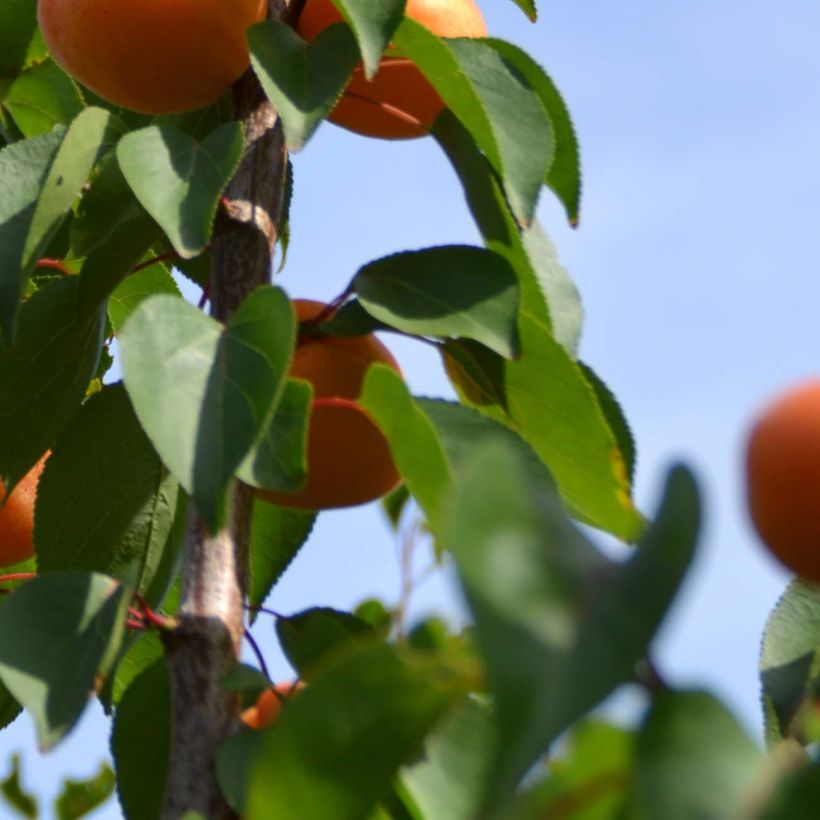

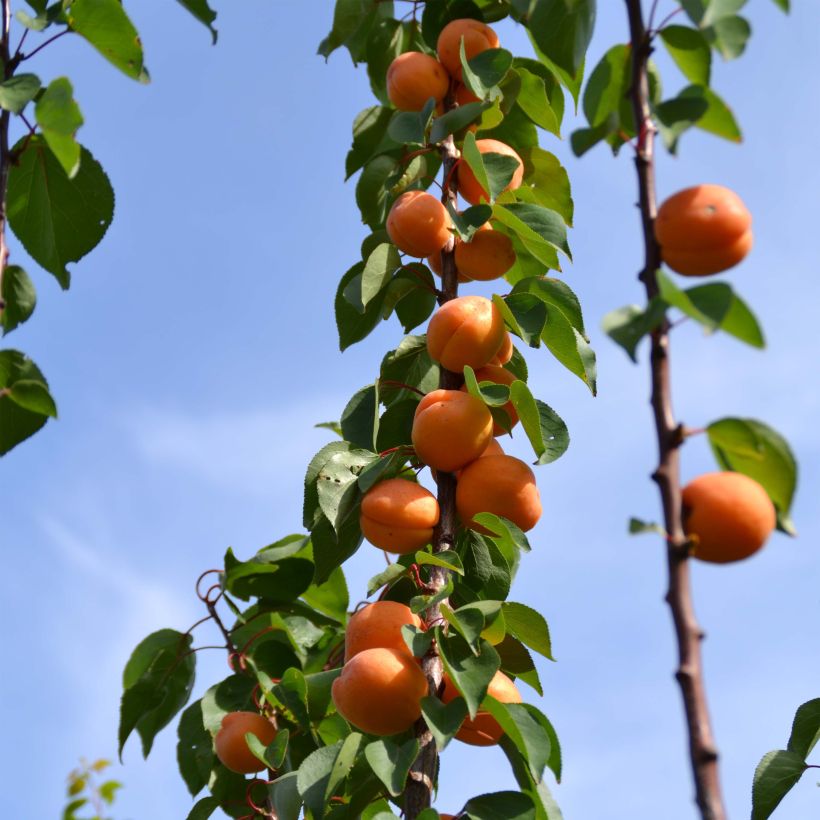

Plant habit
Fruit
Flowering
Foliage
Botanical data
Prunus
armeniaca
Rustique Des Pyrénées® bourquin
Rosaceae
Apricot
Cultivar or hybrid
Myrobolan (Ready-to-plant root ball - Goblet)
Other Apricot trees
View all →Planting and care
Ideally, plant at the beginning of winter, when the tree is in vegetative rest. Plant before the frosts arrive. If you want to plant several apricot trees, space them at least 1.5m (5ft) apart. Dig a hole two to three weeks before planting. The hole should be twice as wide and deep as the pot. On the day, place the tree with its pot in a basin of water to moisten the entire root ball by capillarity. Place compost at the bottom of the hole. Place the tree in the hole and fill with a mixture of soil and potting soil. Firmly tamp down at the base. The root ball should be completely covered. Water thoroughly.
'Bourquin' is not demanding on the type of soil. It will thrive in rich, light, moist but well-drained soil. It does not tolerate stagnant water. Plant it in a sunny location, sheltered from north and east winds.
Planting period
Intended location
Care
Mediterranean fruit trees
Haven't found what you were looking for?
Hardiness is the lowest winter temperature a plant can endure without suffering serious damage or even dying. However, hardiness is affected by location (a sheltered area, such as a patio), protection (winter cover) and soil type (hardiness is improved by well-drained soil).

Photo Sharing Terms & Conditions
In order to encourage gardeners to interact and share their experiences, Promesse de fleurs offers various media enabling content to be uploaded onto its Site - in particular via the ‘Photo sharing’ module.
The User agrees to refrain from:
- Posting any content that is illegal, prejudicial, insulting, racist, inciteful to hatred, revisionist, contrary to public decency, that infringes on privacy or on the privacy rights of third parties, in particular the publicity rights of persons and goods, intellectual property rights, or the right to privacy.
- Submitting content on behalf of a third party;
- Impersonate the identity of a third party and/or publish any personal information about a third party;
In general, the User undertakes to refrain from any unethical behaviour.
All Content (in particular text, comments, files, images, photos, videos, creative works, etc.), which may be subject to property or intellectual property rights, image or other private rights, shall remain the property of the User, subject to the limited rights granted by the terms of the licence granted by Promesse de fleurs as stated below. Users are at liberty to publish or not to publish such Content on the Site, notably via the ‘Photo Sharing’ facility, and accept that this Content shall be made public and freely accessible, notably on the Internet.
Users further acknowledge, undertake to have ,and guarantee that they hold all necessary rights and permissions to publish such material on the Site, in particular with regard to the legislation in force pertaining to any privacy, property, intellectual property, image, or contractual rights, or rights of any other nature. By publishing such Content on the Site, Users acknowledge accepting full liability as publishers of the Content within the meaning of the law, and grant Promesse de fleurs, free of charge, an inclusive, worldwide licence for the said Content for the entire duration of its publication, including all reproduction, representation, up/downloading, displaying, performing, transmission, and storage rights.
Users also grant permission for their name to be linked to the Content and accept that this link may not always be made available.
By engaging in posting material, Users consent to their Content becoming automatically accessible on the Internet, in particular on other sites and/or blogs and/or web pages of the Promesse de fleurs site, including in particular social pages and the Promesse de fleurs catalogue.
Users may secure the removal of entrusted content free of charge by issuing a simple request via our contact form.

































